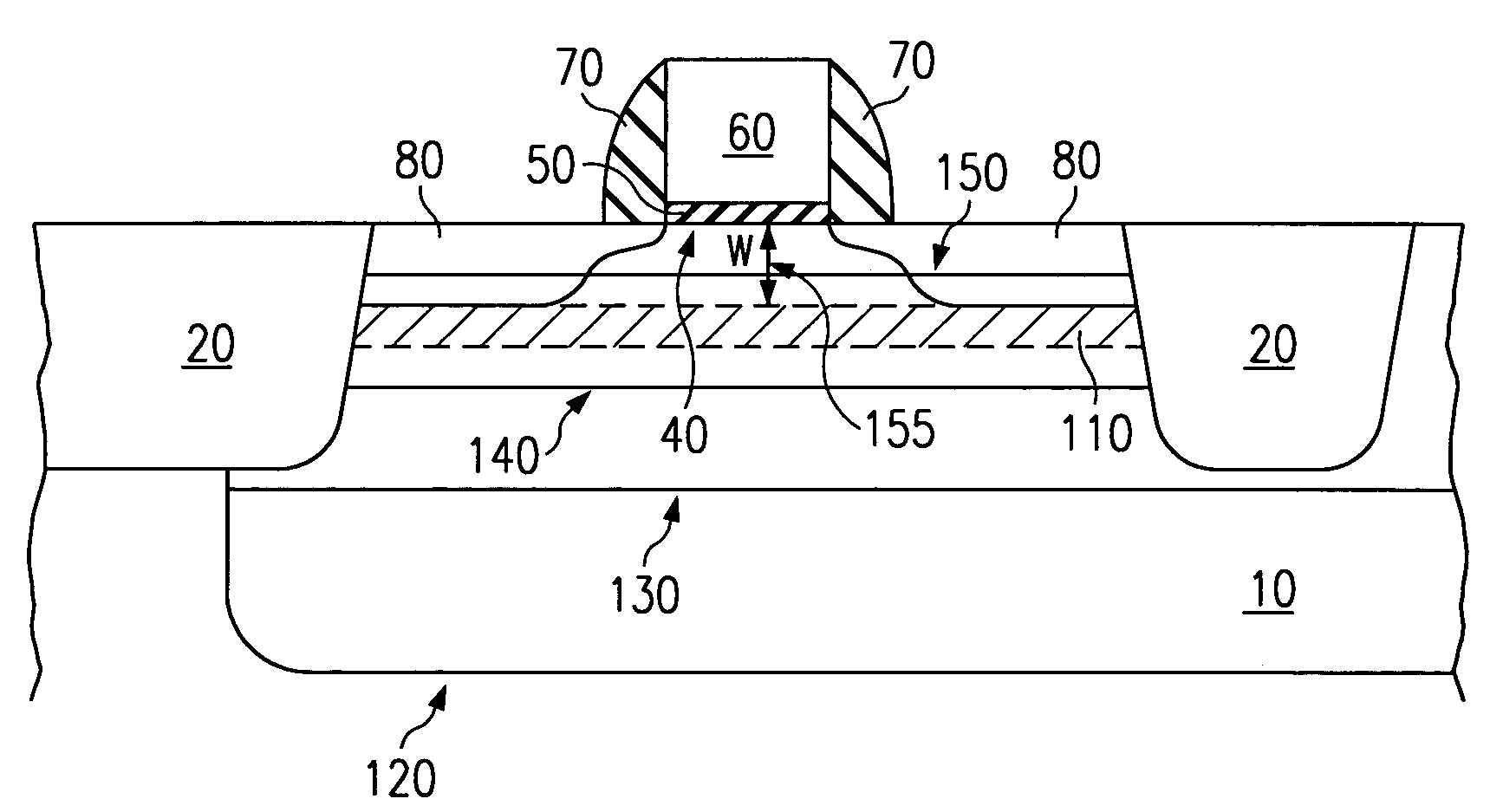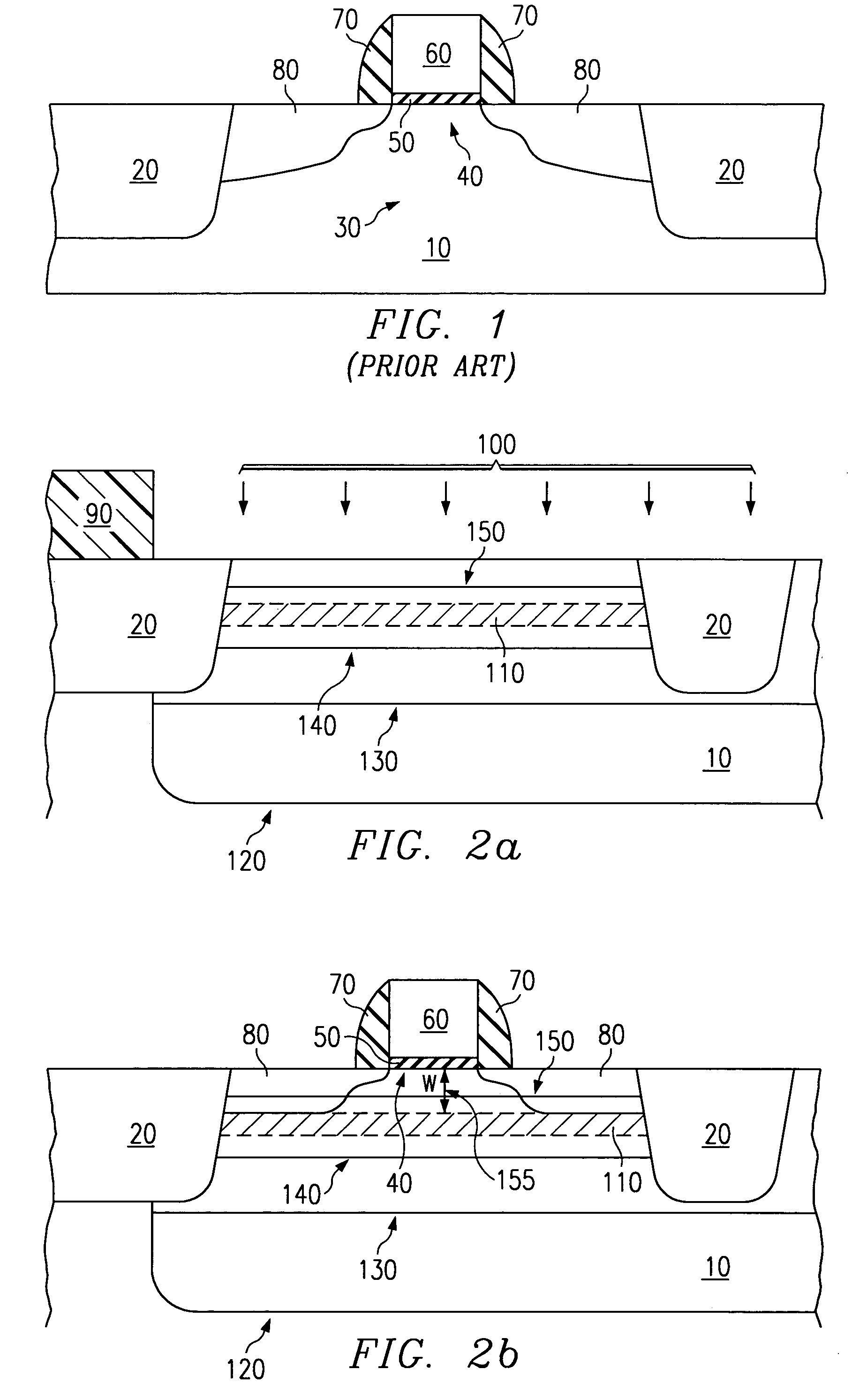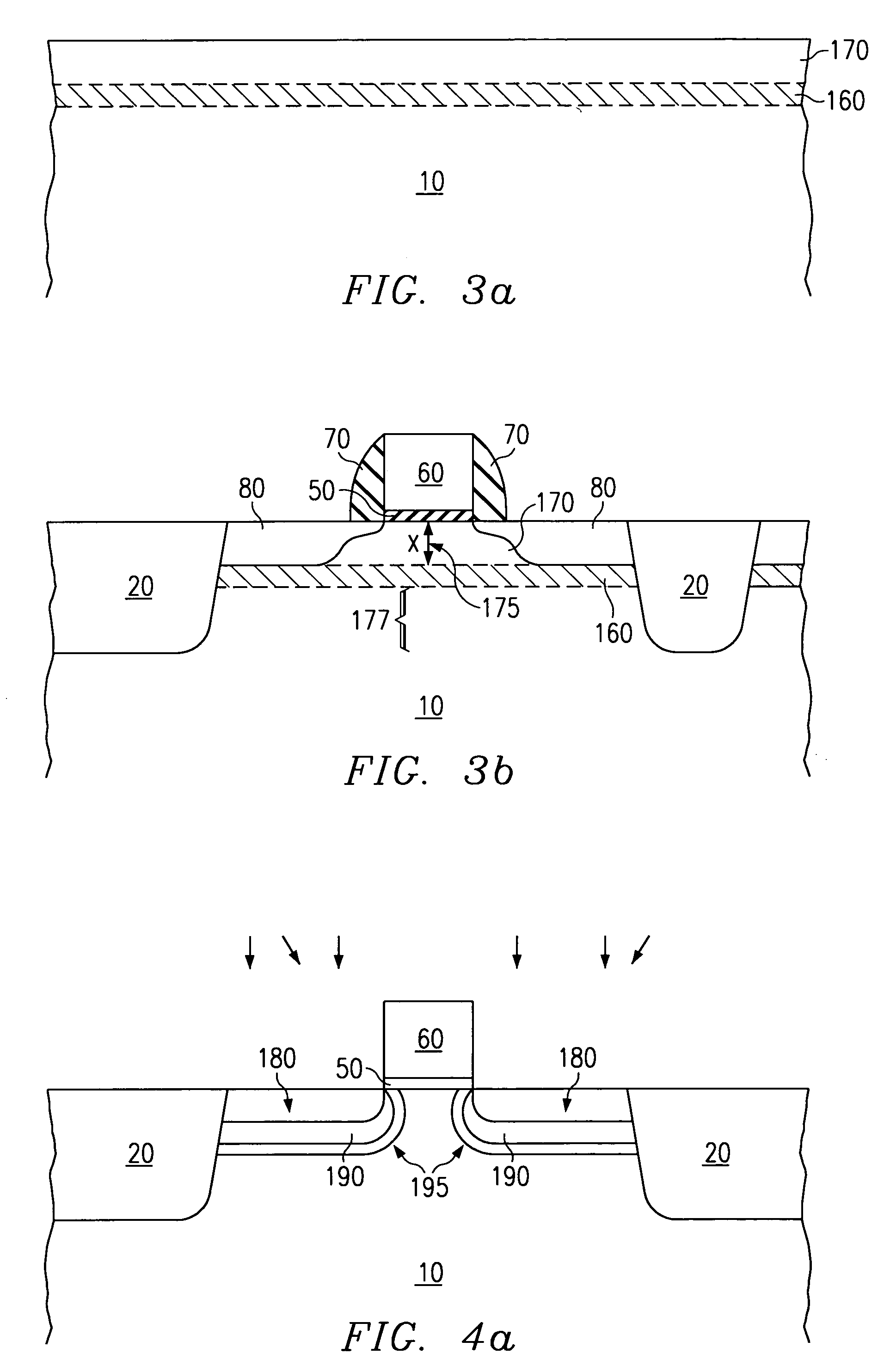Advanced CMOS using super steep retrograde wells
a technology of cmos transistors and retrograde wells, which is applied in the direction of semiconductor devices, semiconductor/solid-state device details, electrical apparatus, etc., can solve the problems of limiting the usefulness and the salability limit, and achieve the effect of increasing the activation of dopants, reducing the “on-state” resistance, and increasing the thermal budg
- Summary
- Abstract
- Description
- Claims
- Application Information
AI Technical Summary
Benefits of technology
Problems solved by technology
Method used
Image
Examples
Embodiment Construction
[0014]The invention will be described with reference to FIGS. 2–6. It comprises super steep retrograde well (SSRW) structures formed using a carbon based capping layer. In general the SSRW is very sensitive to diffusion of dopants and the total thermal budget that the SSRW encounters during processing. Transient enhanced diffusion (TED) and the high diffusion rate of boron makes it very difficult to maintain hyper-abrupt SSRW doping profiles during manufacturing. In the instant invention a thin carbon containing film is used as a diffusion barrier-capping layer over the SSRW. This capping layer can be epitaxially grown or implanted. A near intrinsic channel region can then be formed above the capping layer. Ideally this intrinsic channel region is a thin layer that is typically 50 Å to 300 Å in thickness.
[0015]Shown in FIGS. 2(a) and 2(b) are the formation of a SSRW MOSFET using ion implantation. As shown in FIG. 2(a), a silicon substrate 10 is provided and isolation structures 20 a...
PUM
 Login to View More
Login to View More Abstract
Description
Claims
Application Information
 Login to View More
Login to View More - R&D
- Intellectual Property
- Life Sciences
- Materials
- Tech Scout
- Unparalleled Data Quality
- Higher Quality Content
- 60% Fewer Hallucinations
Browse by: Latest US Patents, China's latest patents, Technical Efficacy Thesaurus, Application Domain, Technology Topic, Popular Technical Reports.
© 2025 PatSnap. All rights reserved.Legal|Privacy policy|Modern Slavery Act Transparency Statement|Sitemap|About US| Contact US: help@patsnap.com



